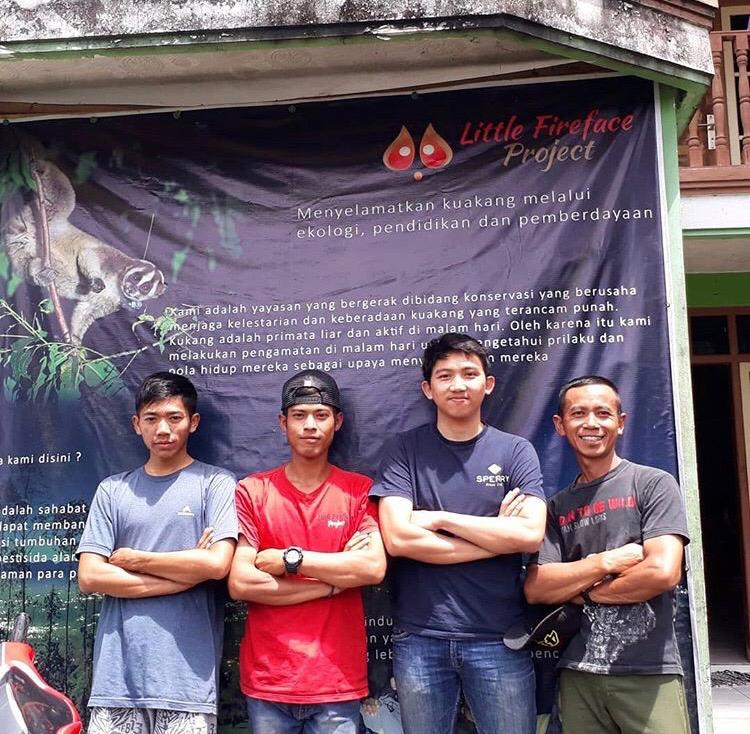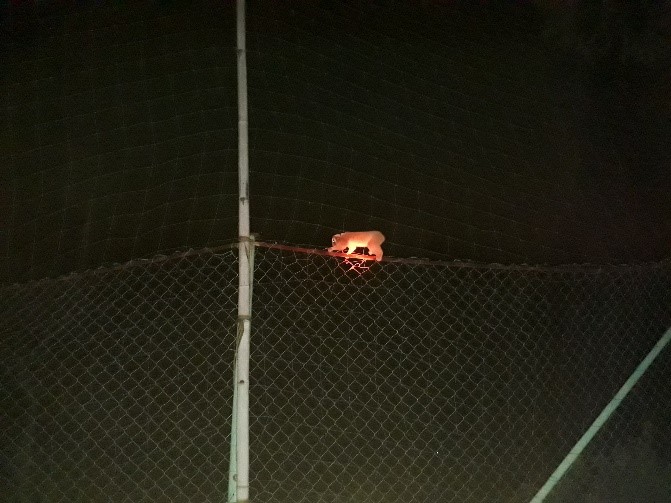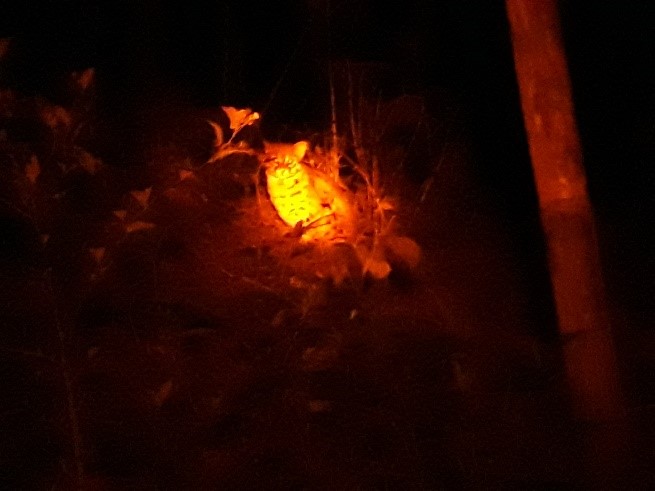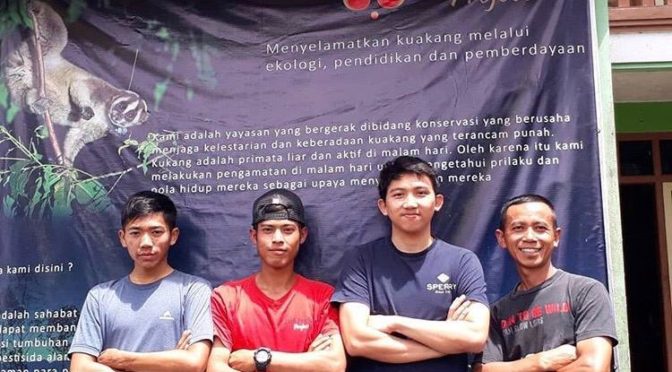Hello, my name is Oriz. I have been a volunteer at The Little Fireface Project (LFP) however I will soon finish volunteering here. I have participated in this program for approximately three months.

Introduction
After first hearing the name Little Fireface Project, I was a little confused by the name ‘Little Fireface’. But after seeing my first slow loris I understand why, it’s because the slow loris has a fire-shaped face, especially the eyes as they look like flames. The LFP’s main focus is to learn about the Javan slow loris and carry out conservation activities on this species. I learnt a lot and had some very valuable experiences here, especially in Javan slow loris conservation. I learnt how to monitor the location of slow lorises using antennas, collect data about the behavior of slow lorises, and learnt about camera traps.
My first experience seeing slow loris
I first came to LFP on January 5, 2019. There was only three people here, me, Ahmad and Ella. The first day I came, I was immediately offered by Ella to take part in the rounds at night. Of course, I answered yes, because I was very interested and this would be my first experience seeing slow lorises. The ‘rounds’ is where you go into the field to observe all the slow lorises who have tracking collar, but only for a short time overnight, to make sure the location and condition of the slow loris is okay. For one slow loris it can take around 20-30 minutes of observation. We were divided into three teams and I followed two trackers named Adin and Dendi. The first slow loris I saw was Tyrion, and he was so cute! I could see very clearly that he was hanging on a pumpkin looking for some food. Soon after, some fog came and covered our view. Due to this the other slow lorises were not clear to see or observe so we could only see the eyes shining at us and took some GPS data.
Learning about behavior data collection
In my initial weeks here I tried to learn about collecting behavioural data on slow lorises so I could collect my own data later. Ella and Ahmad were my teachers. On my first day I was taught by Ahmad how to collect behavioural data using an Ethogram. He explained about the kinds of postures of slow lorises and their behavior by showing pictures and videos. In the field, Ella helped me practice the new skills I had learnt. For the first time, I thought it was quite difficult because I had to focus on seeing the slow loris and had to look at the Ethogram because I had not memorized the different codes for behavior of the slow loris. But over time it became easier to remember the images and codes on the Ethogram. I would like to thank Ella and Ahmad very much and also the trackers who helped me learn this data collection.

My most memorable experience observing a slow loris
Conducting observations of slow lorises is done in two shifts. The first shift is from 17.00-23.00pm and the second shift is from 23.00-05.00am. My favorite shift is the second shift because it usually doesn’t rain and the view of the sky here in Cipaganti is very beautiful. There are lots of stars scattered and the moonlight illuminates the sky. However, the second shift is also the coldest shift in my opinion. Even though I bundle up in multiple layers of clothing, the winds are still so cold, so sometimes I have to bring a blanket for the ground. I have some of the most memorable experiences doing data collection on slow loris behavior. The first one was in February, Rahmat (tracker) and I were preparing to observe the slow loris named Xerxes on the second shift. Since there had been heavy rain, we could not find Xerxes GPS signal at all. We continued to search from 23:00pm until 1:00am. The signal still had not appeared and we almost decided to change the observation target. Finally at 1:30a.m Xerxes signal began to appear, we think that the collar was exposed to water before so it could not emit a signal. After we searched, it turned out that Xerxes’s was not in his territory and had entered into the residential area of the village. Rahmat saw an eyeshine not far from us, and called me to head towards him. It turned out that we found Xerxes on the Volleyball court! We were so surprised and laughed because it was a rare and funny to find a loris on a volleyball court.

My next most memorable event occurred in March. Again this happened when I was watching Xerxes on the second shift with Rahmat. But this incident was not about Xerxes, we saw a leopard cat that was relaxing near us when we were looking for the location of Xerxes. This is the first time I’ve seen a leopard cat in the wild and it was so close! It had a smaller cat-like body but with spots like a leopard or cheetah, it was so amazing! Even better I was able to capture the moment with my camera. ORIZ ANUGERAH PUTRA

